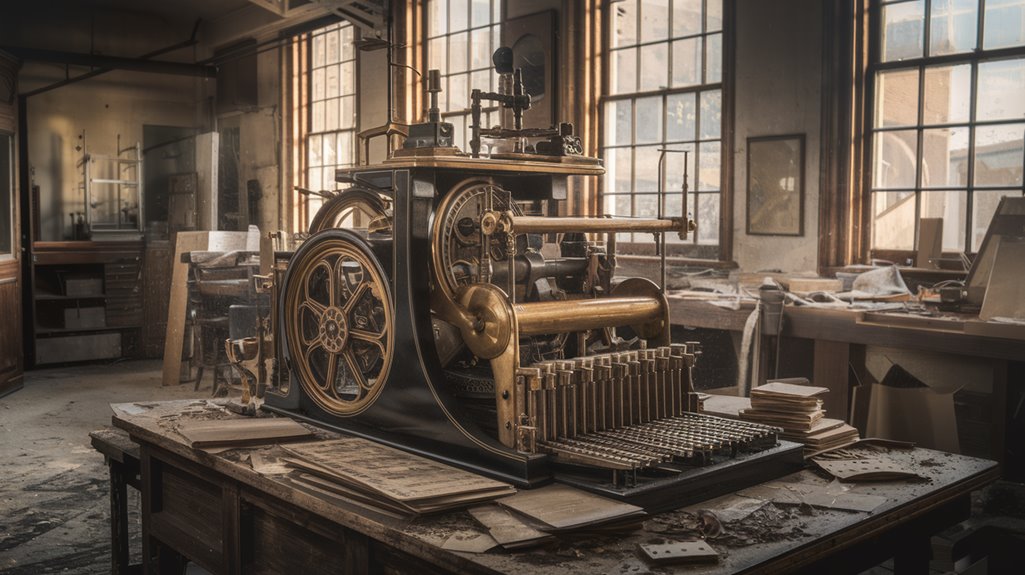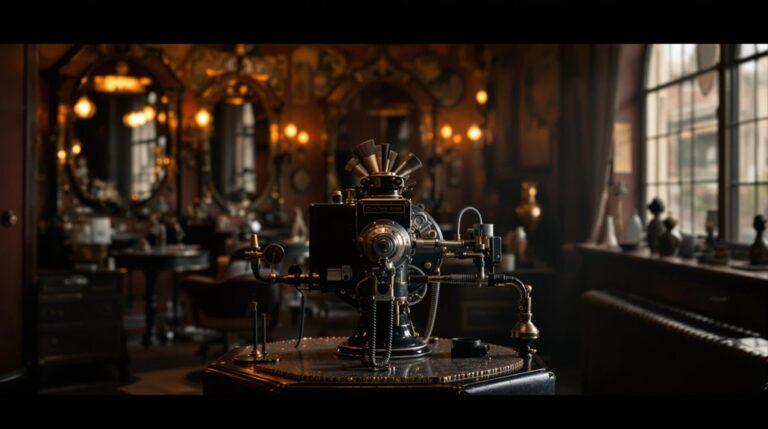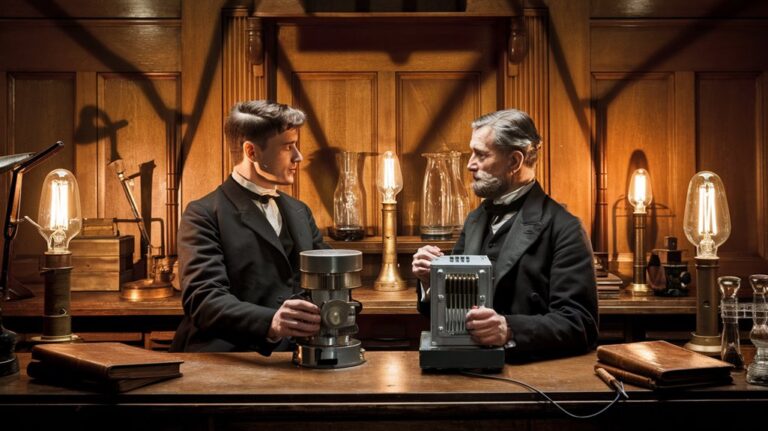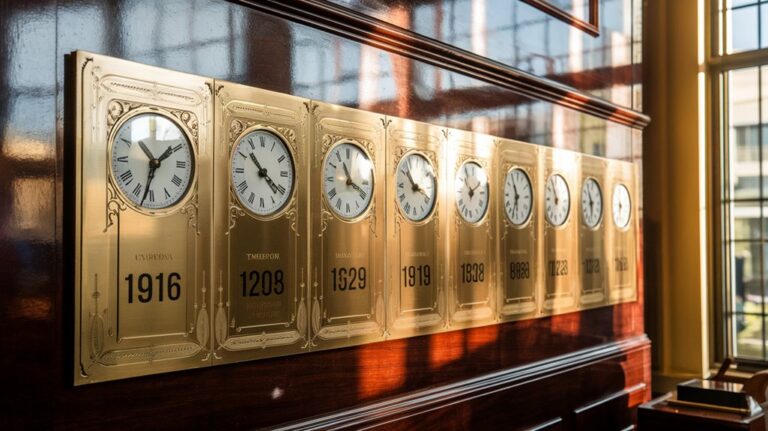Mark Twain’s Typesetting Machine: The Invention That Bled Him Dry
You might think that Mark Twain's greatest gambles came through his writing, but his riskiest venture actually involved a mechanical dream that would revolutionize the printing industry. In the 1880s, Twain invested heavily in the Paige Compositor, a complex typesetting machine that promised to automate the painstaking process of arranging letters for printing. What began as an innovative vision spiraled into a $300,000 nightmare, draining not only his literary earnings but also his family's financial security. The tale of this failed investment reveals a lesser-known side of the celebrated author—one of unchecked optimism and costly miscalculation.
The Dream of Innovation
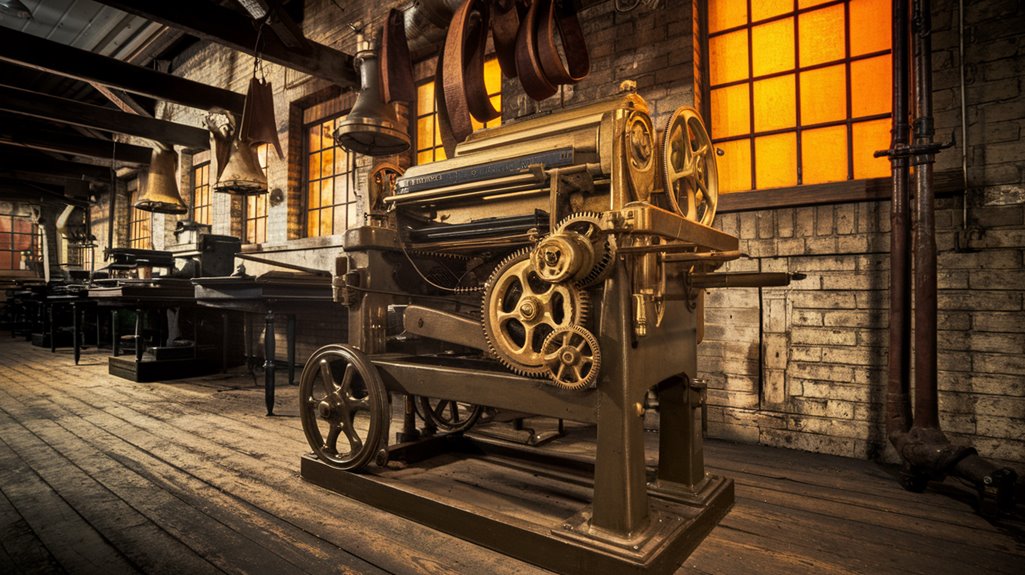
As the Industrial Revolution transformed manufacturing in the late 19th century, James Paige envisioned a revolutionary typesetting machine that would automate the printing process.
Between 1872 and 1888, he developed the Paige Compositor, a marvel of mechanical complexity containing 18,000 intricate parts.
While you'd expect such innovation challenges to be resolved through rigorous testing, the machine's elaborate design proved to be its downfall. The machine's delayed patent filing in 1887 gave competitors like Linotype a significant market advantage. The project ultimately led to Twain's $80,000 debt and subsequent bankruptcy.
Despite averaging 12,000 ems per hour, it required constant adjustments and maintenance.
Unlike the simpler Linotype machine, Paige's invention mimicked human hand movements, making it temperamental and prone to breakdowns.
Though Mark Twain invested $300,000 in the project, believing it would revolutionize printing, only two machines were ever built.
Today, just one survives at the Mark Twain House, a reflection of ambitious innovation gone awry.
Financial Ruins and Redemption
While Mark Twain's literary genius brought him fame, his investment in the Paige Compositor led to financial disaster.
The machine itself proved to be a masterpiece of complexity, featuring 18,000 intricate components that ultimately contributed to its downfall.
You'd be stunned to learn he poured $300,000 (nearly $10 million today) into a machine with 18,000 moving parts that couldn't compete with the simpler Linotype. His financial mismanagement included spending $4,000 monthly on development and depleting his wife's inheritance. The ill-fated venture mirrored his earlier failures with steam vaporizers and board games.
The legal consequences were severe when Jessie Hall sued Paige for $950,000, though the suit was eventually dismissed.
Yet Twain's resilience shone through. He set out on a worldwide lecture tour to pay his debts, while his friend H.H. Rogers made shrewd investments on his behalf.




